The Mediterranean region has long been celebrated for its vibrant culinary traditions, where fresh ingredients and rich flavors come together to create dishes that are as nutritious as they are delicious. Among the many delights of Mediterranean cuisine, the **Mediterranean seafood salad** stands out as a dish that embodies the region’s love for simplicity, freshness, and balance. Whether you’re a food enthusiast, a health-conscious individual, or simply someone who enjoys cooking, the **Mediterranean seafood salad** offers a unique blend of flavors and textures that make it a standout choice for meals year-round.
Key Takeaways
– Discover the vibrant flavors of the Mediterranean Seafood Salad with its fresh ingredients and zesty lemon dressing.
– Insalata di Mare is a light yet satisfying dish, perfect for warm weather meals or as a hearty lunch.
– This traditional Italian salad combines shrimp, mussels, squid, and aromatic herbs for an authentic taste of the Mediterranean.
– Quick & Easy Prep: Gently cook seafood, marinate, and serve with crusty bread or risotto for a balanced meal.
– Packed with fresh seafood, lemon juice, olive oil, and herbs, this salad is both nutritious and flavorful.
– Ideal for summer gatherings, Insalata di Mare offers a refreshing twist with its colorful ingredients and versatile serving options.

What is the Difference Between a Greek and Mediterranean Salad?
Greek Salad
A traditional Greek salad, known as ιhoriatiki&i, typically consists of:
- Cucumber
- Tomatoes
- Onions
- Kalamata olives
- Feta cheese
- Dressed with olive oil, oregano, salt, and pepper
This dish is simple, refreshing, and often served as a side or starter in Greek cuisine.
Mediterranean Salad
A Mediterranean salad is more versatile and can vary widely based on regional preferences and available ingredients. Common components may include:
- Leafy greens such as spinach, arugula, or kale
- Tomatoes
- Cucumbers
- Bell peppers
- Zucchini
- Chickpeas
- Olives
- Cheeses like mozzarella or feta
- Grains such as quinoa or couscous
- Dressing often includes lemon juice, olive oil, vinegar, herbs, and spices
This style of salad is often heartier and may be accompanied by grilled meats or fish, making it a complete meal.
Key Differences
While both salads are fresh and healthy, the primary differences lie in:
- Ingredients: The Greek salad is simpler and focuses on few ingredients, while the Mediterranean salad is more diverse and inclusive.
- Serving Style: The Greek salad is often enjoyed as a standalone dish, whereas the Mediterranean salad can accompany main courses.
- Nutrition: The Mediterranean salad may offer more protein and fiber due to its broader ingredient base.
Preparation Tips
To elevate your salads, consider these tips:
- Season appropriately with fresh herbs and spices.
- Add a variety of textures, such as crunchy vegetables or creamy cheeses.
- Pair with grilled proteins or whole grains for a balanced meal.
Both salads are perfect for summer gatherings, picnics, or healthy dining options. Whether you prefer the simplicity of a Greek salad or the versatility of a Mediterranean-style dish, there’s something for every taste preference and dietary need.
What Kind of Seafood is Good for a Mediterranean Diet?
The Mediterranean diet is renowned for its emphasis on fresh, high-quality ingredients, including a variety of seafood options. These seafood choices not only complement the dietary preferences of the region but also offer numerous health benefits.
- Abalone – Known for its delicate flavor and high protein content, abalone is a great addition to Mediterranean-inspired dishes.
- Clams – Low in calories and rich in nutrients, clams are a staple in many Mediterranean recipes.
- Cockles – Small, briny, and versatile, cockles add a unique taste to soups and stews.
- Crab – A favorite for its sweet meat, crab is often enjoyed in pasta dishes and ceviches.
- Eel – While less common, eel is valued for its elasticity and is featured in various Mediterranean cuisines.
- Flounder – A mild-flavored fish, flounder is ideal for those seeking a less intense seafood experience.
- Lobster – A luxury choice, lobster is celebrated in special occasions and gourmet meals.
- Mackerel – High in omega-3 fatty acids, mackerel supports heart health and is a traditional component of the Mediterranean diet.
- Mussels – Budget-friendly and packed with nutrients, mussels are a common ingredient in stews and paellas.
- Octopus – Known for its tender texture, octopus is used in everything from salads to grilled dishes.
- Oysters – Rich in zinc and a favorite in appetizers, oysters are a delightful addition to meals.
- Salmon – A superfood, salmon is noted for its high omega-3 content and is often grilled or baked.
- Sardines – Small but mighty, sardines are packed with nutrients and frequently canned for convenience.
- Sea Bass – A premium option, sea bass has a buttery texture and is perfect for special occasions.
- Shrimp – Versatile and quick to cook, shrimp is a go-to choice for casual meals and appetizers.
- Squid – Lightweight and flavorful, squid is used in everything from fried dishes to pasta.
- Tilapia – A lean fish, tilapia is a great source of protein and works well in various recipes.
- Tuna – While higher in mercury, tuna is a valuable source of omega-3s and is often enjoyed in salads and sandwiches.
- Whelk – A lesser-known option, whelk offers a unique taste and is used in creative dishes.
- Yellowtail – Known for its firm texture, yellowtail is a popular choice for grilling and sushi.
The Mediterranean diet encourages a balanced approach to seafood consumption, emphasizing variety and moderation. By incorporating these seafood options into your meals, you can enjoy the delicious flavors and health benefits of the Mediterranean lifestyle.

Mediterranean Salad: A Delightful Dish
A Mediterranean salad is a vibrant and refreshing dish that captures the essence of the region’s cuisine. It typically consists of a combination of fresh vegetables, cheeses, and herbs, often dressed with a tangy vinaigrette.
- Ingredients:
- Tomatoes – Fresh and ripe, ideally at peak season
- Cucumbers – Crisp and firm
- Kalamata olives – For their rich, briny flavor
- Feta cheese – A staple for its creamy texture and salty tang
- Fresh basil – Adds a fragrant, herby note
- Oregano – For a touch of earthiness
- Mint – A refreshing twist
- Olive oil – High-quality for optimal flavor
- Lemon juice – For brightness and acidity
- Garlic – A pinch for depth
- Salt and pepper – To season
Preparation Steps:
- 1. Chop the tomatoes, cucumbers, and olives into bite-sized pieces.
- 2. Crumble the feta cheese into small cubes and set aside.
- 3. Tear fresh basil leaves into small pieces and chop mint leaves finely.
- 4. In a large bowl, combine the chopped vegetables, feta cheese, basil, and mint.
- 5. In a separate bowl, whisk together olive oil, lemon juice, minced garlic, salt, and pepper to create a zesty vinaigrette.
- 6. Pour the dressing over the salad and toss gently to combine.
- 7. Serve immediately for the freshest taste or refrigerate until ready to serve.
For an added protein boost, consider topping your Mediterranean salad with grilled shrimp, chicken, or even halloumi. This versatile dish can easily become a complete meal!
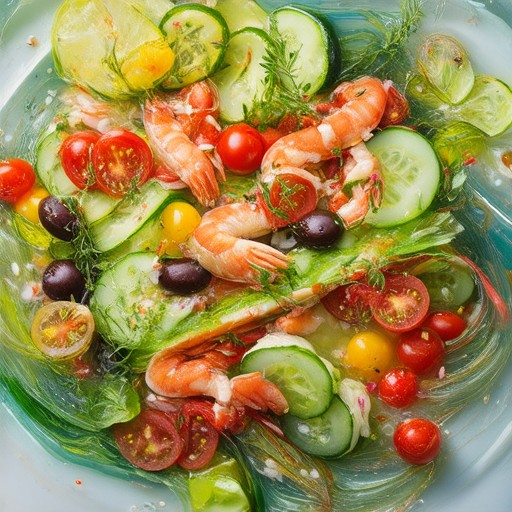
Italian Seafood Salad: Insalata di Mare
The Italian seafood salad, known as Insalata di Mare , is a vibrant and refreshing dish that showcases the country’s love for fresh, flavorful ingredients. This light yet satisfying salad combines a variety of seafood with zesty lemon dressing and aromatic herbs for a truly authentic taste of Italy.
Overview
Insalata di Mare is a traditional Italian dish that typically features a mix of gently cooked seafood, such as shrimp, mussels, and squid, tossed in a fresh marinade made from lemon juice, olive oil, parsley, and a touch of spice. The dish is often served as an antipasto, or starter course, and is perfect for warm weather meals or as a light lunch option.
Ingredients
Here’s a breakdown of the key components needed for Insalata di Mare:
- Shrimp or prawns
- Mussels
- Squid (calamari)
- Lemon juice
- Olive oil
- Parsley
- Red pepper flakes (optional)
- Garlic (optional)
- Celery (optional)
- Onion (optional)
- Bread (for soaking, optional)
- Artichoke hearts (optional)
- Octopus (optional)
Preparation
To prepare Insalata di Mare, follow these simple steps:
- Cook the Seafood: Gently cook the shrimp, mussels, and squid in a pan with a bit of olive oil, garlic, and red pepper flakes until just tender. Remove the shells from the shrimp and divide the squid tubes into rings.
- Marinate: Combine the cooked seafood with chopped parsley, lemon juice, olive oil, salt, and pepper in a large bowl. Let it marinate in the fridge for at least 30 minutes to allow the flavors to meld.
- Add Optional Ingredients: If using, add sliced celery, diced onion, or artichoke hearts to the mixture. Toss gently to combine.
- Serve: Arrange the salad on a platter or plate. Drizzle additional lemon juice and olive oil on top before serving. Serve with crusty bread or a side of risotto for a heartier meal.
Serving Suggestions
Insalata di Mare pairs exceptionally well with:
- Crusty bread or bruschetta
- Garlic butter toast
- Creamy risotto
- Grilled vegetables
- Polenta
For a twist, try adding cubed mozzarella cheese or anchovy fillets to the salad for a richer flavor profile.
Recipe Resources
Looking for more seafood-inspired recipes? Explore our collection of seafood recipes and discover how to prepare fish and shellfish with ease. From ceviche to paella, there’s something for every seafood lover!
Key Ingredients
Don’t forget to stock up on these essential ingredients for your next seafood feast:
- Fresh fish and seafood
- Lemons for zestiness
- Olive oil for richness
- Parsley for freshness
- Spices and herbs
By following these steps and using high-quality ingredients, you’ll be able to create a delicious and authentic Insalata di Mare that will impress family and friends alike!
What Goes In A Seafood Salad?
A seafood salad is a refreshing dish that combines various types of seafood with fresh vegetables and a flavorful dressing. Here’s a breakdown of the key ingredients and components that typically go into a seafood salad:
- Seafood: The base of a seafood salad often includes shrimp, crab meat, salmon, or tuna. These ingredients are commonly used for their tender texture and rich flavors.
- Vegetables: Fresh vegetables like celery, red onion, cucumber, and bell peppers are frequently added for crunch and freshness. Avocado and mango are also popular additions for a tropical twist.
- Dressing: A creamy mayonnaise-based dressing is a classic choice, often flavored with lemon juice, mustard, garlic, or dill. Other alternatives like aioli or sriracha may also be used for variation.
- Herbs and Spices: Ingredients like fresh dill, parsley, chives, or Old Bay seasoning are commonly incorporated to enhance the flavor profile of the salad.
- Additional Enhancements: Some recipes include boiled eggs, sweet pickles, or radishes for extra texture and flavor. Cheeses like feta or goat cheese can also add a creamy element.
How To Prepare A Seafood Salad
To assemble a delicious seafood salad, follow these simple steps:
- Chop and Combine: Start by chopping your chosen seafood and vegetables into bite-sized pieces. Combine them in a large bowl.
- Make the Dressing: In a separate container, whisk together mayonnaise, lemon juice, mustard, garlic powder, and herbs until smooth.
- Mix and Toss: Pour the dressing over the seafood mixture and toss gently until evenly coated. Refrigerate for at least 30 minutes to allow the flavors to meld.
- Serving Suggestions: Serve your seafood salad on a bed of crisp lettuce leaves, atop a slice of toasted bread, or paired with a side of rice or quinoa for a balanced meal.
Popular Variations
There are countless ways to customize a seafood salad to suit personal preferences. Some popular twists include:
- Adding avocado or mango for a fruity kick.
- Using different base seafoods like salmon or tuna.
- Incorporating Asian-inspired flavors like soy sauce or sesame oil.
- Serving it as a wrap or sandwich in a tortilla.
By combining high-quality ingredients and a well-balanced dressing, you can create a seafood salad that’s both nutritious and flavorful, perfect for a light lunch or dinner.
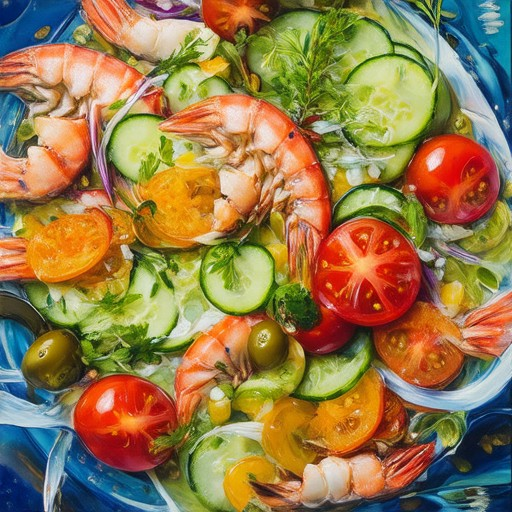
Why is it called Waldorf Salad?
The Waldorf salad takes its name from the Waldorf-Astoria hotel in New York City, where it was first created for a charity ball held on March 13, 1896, to benefit the St. Mary’s Hospital for Children. The dish was introduced during this event and quickly became associated with the hotel due to its popularity.
Over time, the Waldorf salad has evolved into several variations. While the traditional version typically includes apples, celery, and mayonnaise, modern interpretations often incorporate grapes, walnuts, and sometimes raisins. These variations reflect the dish’s adaptability and the personal preferences of chefs and home cooks.
Despite these changes, the name remains tied to the Waldorf-Astoria, showcasing the dish’s enduring legacy and connection to its place of origin.

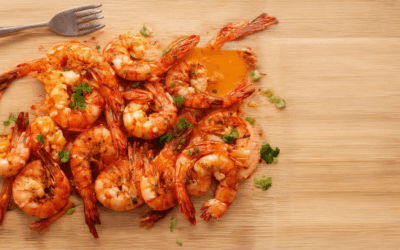
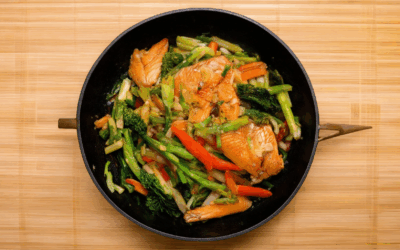
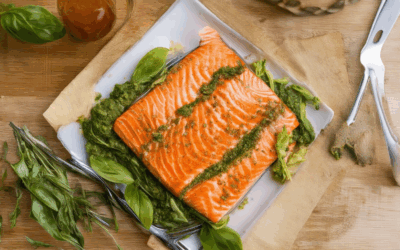
0 Comments